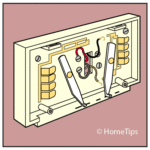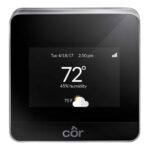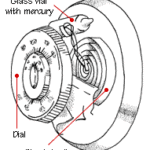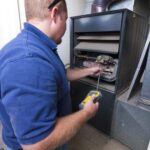Many problems with a heating or cooling system can be traced back to the thermostat. In some cases, the thermostat is out of adjustment. Other times its batteries are dead. Obviously, replacing batteries or making a simple adjustment are easy solutions.
If your electronic thermostat is acting up and you’re sure it’s programmed properly, replace the batteries. With most types, you pull the thermostat’s body straight out from its baseplate and find the batteries mounted to the back side of the body. But check your owner’s manual…if your thermostat isn’t built this way, you’ll break it!
If these steps don’t do the trick and your thermostat is outdated, it may not be worth the time and effort to fix it. It may be more affordable and sensible to replace it. Please see Home Thermostats Buying Guide. Then, for information on how to install it, see How to Install or Replace a Thermostat.
Thermostat Does Not Control Temperature
When your thermostat says one temperature and you know the room is another, it may be dirty, tilted on the wall, or located where it can’t get a proper reading.
- Turn the power off to the heating system.
- Remove the thermostat’s cover. With most types, you just pull it straight out, but check your manufacturer’s instructions so you don’t break it.
- Use a soft brush or vacuum with a brush attachment to gently and carefully remove dust and dirt. If the thermostat has two parallel metal strips, wipe them off with a soft cloth.
- Look for corrosion. You can try to remove corrosion with electronic contact cleaner. If it’s an outdated thermostat, consider replacing it with a newer model.
- If you have a mechanical (not electronic/ programmable) thermostat, be sure it is mounted level on the wall. Check it with a small torpedo level.
- A thermostat should be mounted about 5 feet from the floor, located where it can easily sense an air sample that is consistent with room temperatures. This means it should not be put in a corner, behind a door, in a closet, near a window or door, or near a heat source. If it is mounted in one of these spots, consider relocating it. This involves rerouting wires so unless you’re handy with this sort of thing it’s probably better to hire an electrical contractor or heating technician to do the work.
- If none of these steps works, replace the thermostat with a new programmable thermostat.
Extreme Temperature Swings
If your gas- or oil-burning furnace cycles on and off too frequently or there are major swings in room temperature before the furnace goes on, the thermostat may just need a simple adjustment. To adjust the thermostat:
- Remove the thermostat’s cover. For a mechanical thermostat with a mercury switch (a small vial filled with mercury), first use a small torpedo level to make sure the thermostat is mounted level on the wall. If it isn’t level, it won’t measure temperatures properly.
- Adjust the heat anticipator. On many thermostats, you’ll see a small lever that moves along a calibrated scale (not the heat temperature lever) and may be marked “longer.” This is the heat-anticipator adjustment. Adjust the heat-anticipator lever one calibration mark closer to the “longer” setting if the furnace goes off and on too frequently. If the furnace allows room temperature to drop too low or rise too high before the furnace goes on or off, move the lever one mark away.
- Wait several hours for the thermostat to stabilize at this new setting.
- Repeat the adjustment if necessary.
- If making these adjustments doesn’t solve the problem, consider replacing your thermostat.
Shop for thermostats now. ©Don Vandervort, HomeTips
NEXT SEE:
• How a Thermostat Works
• Home Thermostats Buying Guide
• How to Test or Bypass a Thermostat
• How to Install an Electronic Thermostat



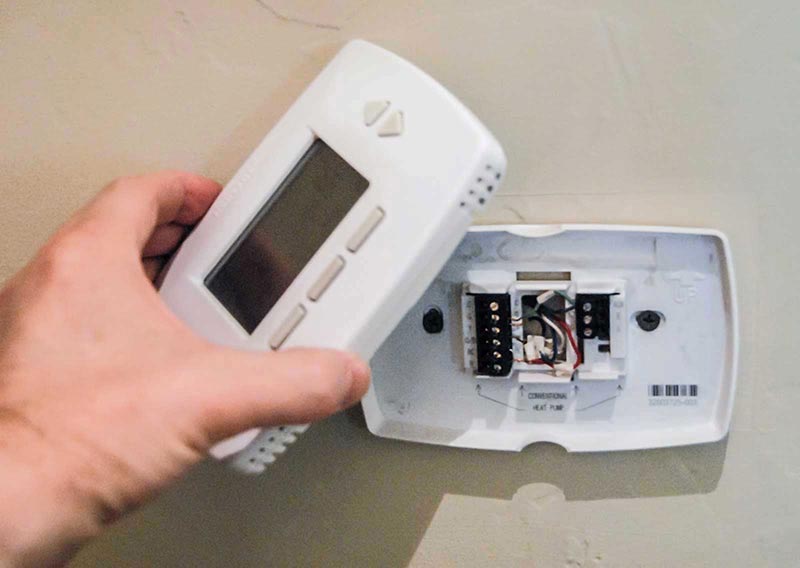
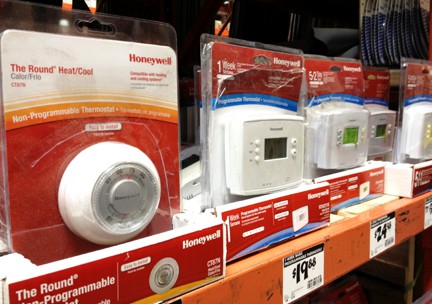




 Don Vandervort writes or edits every article at HomeTips. Don has:
Don Vandervort writes or edits every article at HomeTips. Don has:
